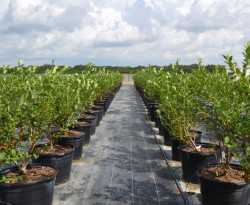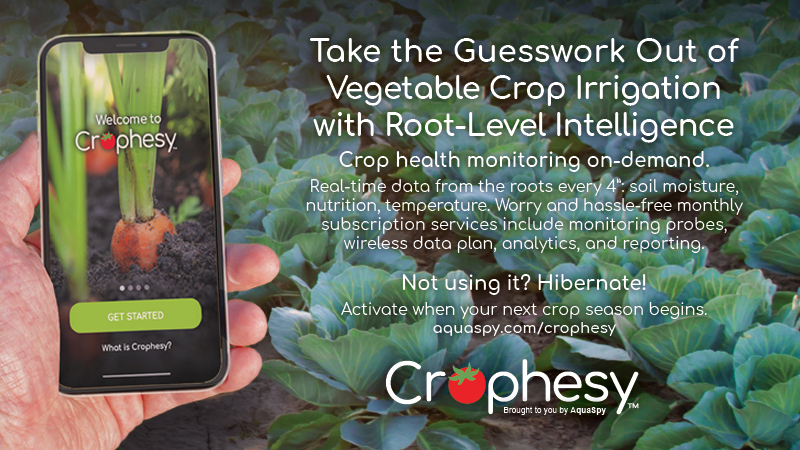Build Local Buy-In For Your Farm
Since Tom O’Brien and his family moved to Florida from New Jersey in the 1970s, there has been an emphasis on self sufficiency in his fresh produce operations. Over the years, the family business has grown from brokering produce to growing a mix of fruits and vegetables.
C & D Fruit and Vegetable Company is family-owned and operated with Tom, his brothers David and Steve, and brother-in-law John Cucci. C & D Fruit and Vegetable Company grows, sells, consolidates, ships, and packs fresh fruits and vegetables. The company has more than 25 growing locations from Florida to Michigan to pack and ship the fresh fruits and vegetables to customers throughout the U.S. and Canada.
During the winter months, strawberries are the big crop in production. In fall and spring, a mix of peppers, tomatoes, beans, and squash are planted and marketed.
“When we started getting into growing, we wanted to be more or less self-contained, so we started a trucking company, packinghouses, processing, and foodservice operation,” says Tom O’Brien, president of the Bradenton-based farming operation. The processing and foodservice portions of the business have since been sold, but other aspects remain active and evolving.
Going Local
In 2011, the O’Briens started a new venture called O’Brien Family Farms, which includes a retail market and education center. Fruits and vegetables are grown on location, featuring U-Pick and hydroponic plantings. The U-Pick options include strawberries, blueberries, and tomatoes.
“We always wanted to do a local market, but never pulled the trigger on it until a couple years back,” says Tom. “We’ll open up our third season this month. We’ve doubled our expectations with the market each year, so this whole ‘buy local’ trend definitely has meaning.”
The market and farm has built a loyal customer base, is a favorite school field trip destination, and is the place local chefs turn to for fresh-from-the-field produce. The retail market and U-Pick farm is open from November until June.
Tom says there are three critical elements to the success of the retail outlet – people, location, and great tasting fruits and vegetables. “I am very fortunate to have family members and employees who grew up in the business and have great personalities to keep our customers coming back,” he says.
O’Brien Family Farms’ Home-Grown Success

The farm is located in a great spot near a population center on Hwy. 64 just six miles east of I-75. “Location is critical to the success of the market,” he adds. “People will drive a certain distance to get here, but you need a steady flow of traffic to help create word of mouth about what we offer.”
Tom says that also being a commercial grower offers another distinct advantage in that they have other outlets to sell their produce if they have an have over-supply situation. “It cuts down on shrink,” he says.
Interactive Initiative
Tom’s daughter Shannon has turned to social media to help promote the farm’s retail market. She has created pages on Facebook, Twitter, Instagram, and Pinterest to keep customers apprised of market happenings, sales, recipes, and promotions.
“We get a lot of interest from people wanting to see photos of people and things happening on the farm,” says Shannon. “We also love ‘check-ins’ and getting ‘tagged’ in pictures from our customers when they visit O’Brien Family Farms.”
The Facebook check-ins and being tagged in photos in other people’s Facebook pages can have a multiplier effect, spreading the word about the farm. And, it lends instant credibility that a “friend” thinks enough of this market to do business with them and share it on Facebook.
“We have quite a few instances where we’ve had customers, media contacts, and more come in just from hearing about us via social media,” she says. “My personal favorite are two very popular bloggers, one from Los Angeles and one from Austin, TX, contacting us about coming by for a visit because they’re both originally from the Tampa Bay area.
“In addition to social media, we donate a lot of product to charity events, soup kitchens, etc. We do lots of field trips and special events, like Farm to Table dinners for charities. Another thing we’re trying to start promoting for charity organizations to raise money is a Strawberry Pre-sell program. Basically, organizations will pre-sell flats of strawberries, then we will deliver to them to the organization in the spring and they’ll have the opportunity to raise a lot of money for their organization.”
Attention to detail and what some might consider smaller things also help build a buzz and create goodwill for the retail market. Things like spacing U-Pick rows to be accessible to wheelchairs have resulted in disabled groups coming out to the farm to pick their own produce. This year, live cams will be broadcasting the foot traffic in the market and a “bee cam” will be posted on the honeybee hive observatory. These cams will be promoted via social media feeds and linked on the O’Brien Family Farms website.
With all this activity to engage the local community, it is not surprising that each of O’Brien Family Farms’ first couple of years have doubled its expectations. Tom attributes it to good marketing, great produce, and the human touch. “We make a point of emphasizing we are a family farm,” he says. “And, we care about your family, our customers, like you are part of our family. I believe this has worked for us, because people can relate to it.”
Experimenting With Tasty Tomatoes
This season, Tom O’Brien will be putting in hydroponic tomatoes under a Haygrove high tunnel. He is working with William “Skeeter” Bethea of Enza Zaden, who has been pioneering protected agriculture in Florida. The tomato variety being tested is indeterminate, meaning it can be harvested for roughly five months. The goal of the planting is producing a consistent flow of product, higher yields, better quality, and a much longer harvest window.
According to Bethea, the variety being planted under the tunnel is Mardona, which is a round tomato with tomato yellow leaf curl virus resistance. The planting will be set up hydroponically and will be planted in 3-gallon cheater nursery pots with a media made up of 60% pine bark, 30% Canadian peat, and 10% sand.
The trellis where the crops will be grown is a supported cable system that is built 8 feet above the ground, or higher, that carries the full weight of the crop. The support string is on a spool that you hang on the cable; the string is dropped down and clipped at the base of the plant.
“On tomatoes, we prune to a single stem so as the plant grows you wrap the string clockwise up the stem,” says Bethea. “These indeterminate plants
will grow to more than 30 feet long, so you keep dropping the string, wrapping the stem, and sliding the spool to keep the plant moving down, and supported by the trellis.”
Tom jokes that his customers will act as taste-testers to evaluate the flavor of the vine-ripe tomatoes on location at the market when the harvest begins.










